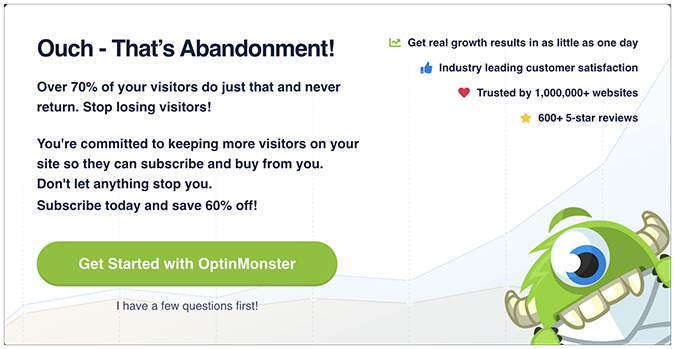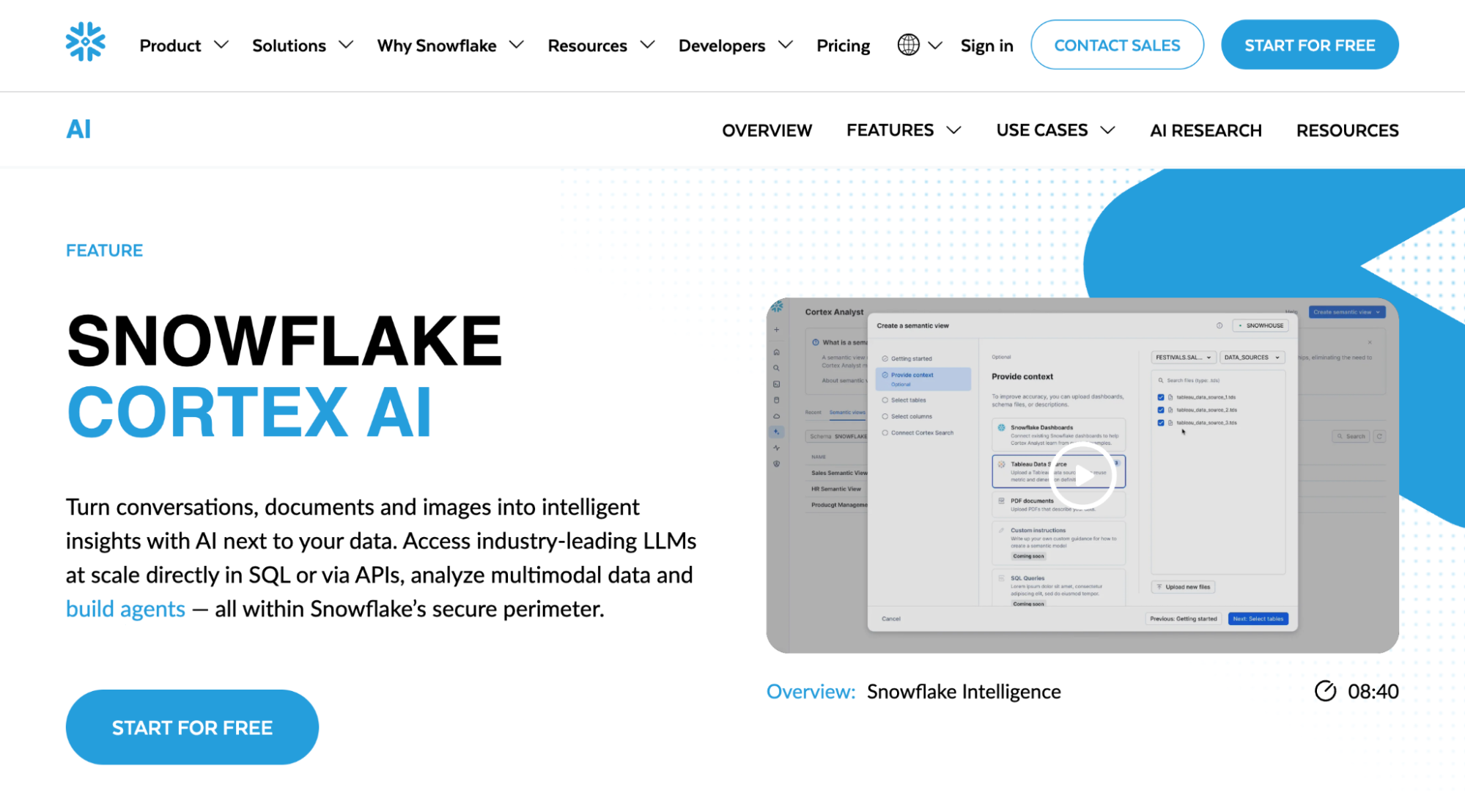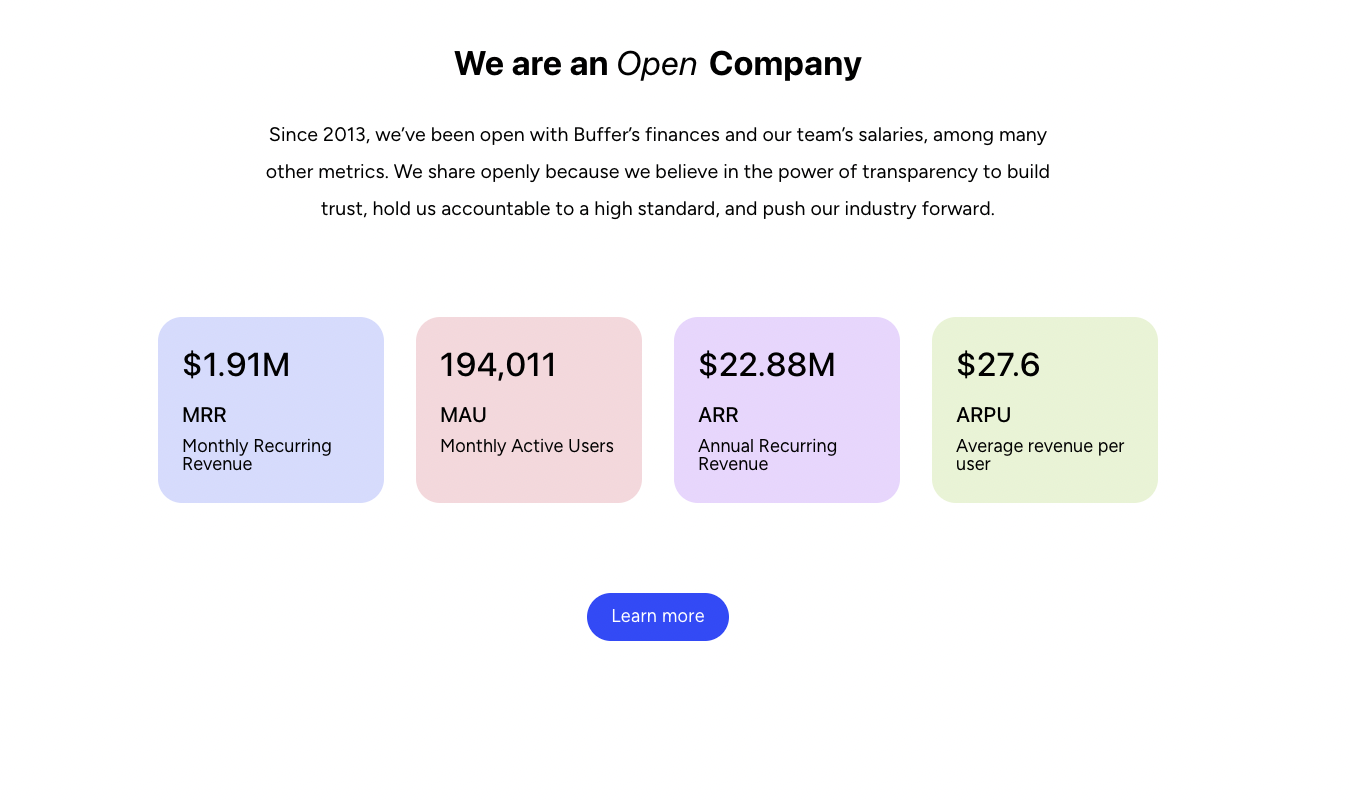Scarcity and urgency are powerful psychological triggers that, when used correctly, can boost your sales and make your business more profitable in the long run. On the other hand, abusing these two concepts risks damaging your brand’s credibility and tanking your sales due to a tarnished reputation.
Here’s a deeper look into scarcity and urgency, including real-world examples, practical tips, and common traps to avoid.
What is Urgency?
In marketing, urgency can be described as the time pressure customers feel to purchase a product, service, or experience before a certain date or before the offer changes. You can encounter urgency in limited-time offers, clearance events, seasonal promotions, flash sales, and countdown timers.
For example, a Valentine’s Day limited-time offer on a perfume is likely to generate more customer engagement during that period than the same product would at any other time of the year.
What is Scarcity?
Conversely, scarcity is the feeling customers experience when they need to buy a product, service, or experience before it runs out of stock. It’s directly tied to item quantity and is often used to compel customers to act quickly and spend more money compared to their initial allotted budget. You can come across scarcity tactics in “only X items left” type deals, low stock warnings, “people are checking out this item” alerts, exclusive club memberships, and limited edition collections.
Both urgency and scarcity can arise organically, such as in cases of limited stock, a manufacturer going out of business, or unpredictable market shocks like in the COVID-19 pandemic, or be deliberately created by the seller via promotions, advertising, or purposeful inventory limitations.
The Critical Differences Between Urgency and Scarcity
Urgency and scarcity are closely interlinked, but they’re not the same. Often, urgency can arise as a secondary effect of scarcity, amplifying the impact through psychological channels that aren’t fully understood, but are deeply rooted in people’s loss aversion and FOMO—i.e., the fear of missing out on the latest trends.
However, they work in different ways and have a unique purpose within a given brand’s marketing strategy.
For instance, scarcity emphasizes the limited supply of a product or service, making the offer more desirable for consumers due to its rarity and exclusivity. On the flip side, urgency capitalizes on the limited time of an offer, urging prospects to act immediately before the buying opportunity disappears for good.
The main idea behind scarcity is to boost a product or service’s value through either artificial or natural supply restrictions. Whether or not they’re aware of the psychological underpinnings behind these concepts, people are more likely to buy items they perceive as rare. In other words, even marketers and campaign managers aren’t immune to a masterfully crafted, scarcity-driven campaign.
Urgency marketing primarily relies on FOMO tactics, featuring offers that are going to expire soon or rewards that are available for a limited time. This approach prompts customers to act quickly and sometimes even buy a product or subscribe to a service they weren’t originally planning to in the first place.
Aggressive use of either scarcity or urgency can result in buyer’s remorse, where the customer can start feeling like they shouldn’t have made the purchase, and, in some cases, may even ask for a refund.
Here’s a table that illustrates the similarities and differences between scarcity and urgency.
| Component | Scarcity | Urgency |
|---|---|---|
| Key elements | Based on limited stock, item availability, or exclusivity. | Based on limited time or fast-expiring offers. |
| Psychological outcome | Increase in a product or service’s perceived value due to artificial or natural rarity. | Fastens decision-making driven by time pressure. |
| Common tactics | Membership-only, limited stock, exclusive offers. | Countdown timers, “expiring soon” copywriting message, flash sales. |
| Example | “Only 3 items left in stock.” | “Enter now to get a 15% discount. Offer expires in 24 hours.” |
| Goal | Increase demand for a product or service. | Prompt customers to act faster. |
| Possible risks | Customers may lose trust if scarcity is overused or artificially inflated. | It may lead to buyer’s remorse, resulting in higher-than-average refund rates. |
| Relationship | Scarcity is often used to create urgency. | Urgency can emerge from scarcity. |
Besides urgency, other marketing concepts and tactics adjacent to scarcity include rarity, exclusivity, extremely limited supply, and skyrocketing prices due to excess demand.
The Psychology Behind Scarcity and Urgency
While there’s no definite evidence to fully explain the psychology and behavioral science behind scarcity and urgency, there are some indications of how they might influence the relationship between customers, products, and existing market trends at a given time.
In a recent meta-analysis on scarcity and customer purchase intentions, researchers Belinda Barton, Natalina Zlatevska, and Harmen Oppewal uncovered some interesting takeaways.
Namely, if a product is unavailable, it greatly increases its value and desirability from the customer’s perspective, further enhancing the latter’s buying intentions.
Furthermore, the researchers categorized the scarcity effect into three groups based on the product or service’s utility and its impact, including:
- Demand-based scarcity—This type of scarcity worked best for utilitarian products, such as toilet paper rolls.
- Supply-based scarcity—This type of scarcity had the greatest influence on the purchase intent of experiences, such as vacation itineraries.
- Time-based scarcity—The last scarcity type improved the conversion rates of high-involvement products, such as a life insurance package.
The psychological effects of scarcity (and its emergent counterpart, urgency) on consumers varied in accordance with several other factors, including the level of consumer involvement, the education, sex, and age of the target demographic, the degree of brand familiarity, as well as, surprisingly, the potential buyer’s need for product or service uniqueness.
According to Brock’s commodity theory cited in author Michael Lynn’s paper, “scarcity enhances the value (or desirability) of anything that can be possessed, is useful to its possessor, and is transferable from one person to another.” According to this broad definition, a commodity can be any marketable product, like food and clothing, but it also includes experiences such as concert tickets, plane rides, and hotel bookings.
The second key concept in commodity theory is the item’s usefulness in the eyes of the purchaser. Any improvements to the commodity (a decrease in price would be considered an improvement from the perspective of a customer) can automatically boost its desirability. In other words, a commodity’s perceived value is just as, if not more important than, its real market value.
The third and final key factor in commodity theory refers to the restrictions on obtaining a product or service, also known as its unavailability. In marketing, the authors continue, commodity unavailability may arise due to supplier limitations, excess demand, and narrow purchase time windows. These three are generally accepted as natural market forces, whereas non-market forces such as natural disasters, wars, and faulty technology could also contribute to a sudden unavailability.
Other theories used to explain the psychology of scarcity and urgency include conformity theory, regret theory, and reactance theory. Conformity theory posits that scarcity can emerge as an effect of group norms and dynamics, signaling a commodity’s popularity, and, in turn, increasing its desirability. One drawback of this theory is its inability to fully explain people’s purchase preferences for scarce commodities due to limited supply, an outcome that lives on the opposite side of the conformity spectrum—uniqueness.
Regret theory downplays the perceived value of commodities and the uniqueness factor, instead putting a strong emphasis on customers’ inherent drive to avoid making the wrong choice, i.e., prioritizing loss aversion over the combined factors of purchase intent and external market fluctuations.
Reactance theory, first developed by Jack Brehm in 1966, deals with intentional market limitations, regulatory restrictions, and other forms of market gatekeeping that aren’t directly tied to actual supply and demand. From this vantage point, consumers may change their behavior in response to evolving market conditions, with an intent to improve their lives by acquiring what they think of as a beneficial product or service.
In summary, the psychology behind how consumers behave to acquire scarce items is a complex dance of internal motivations, culture, upbringing, market conditions, key demographic traits, as well as external factors such as regulatory changes, supply chain logistics, technological developments, legislation, and economic shocks—all coming together to shape people’s buying intent in nuanced ways.
Examples Across Industries
Now that we’ve examined the psychological triggers behind scarcity and urgency, let’s take a closer look at how some of the world’s biggest brands leverage the power of these marketing tactics across different industries.
1. Amazon (Ecommerce)
Perhaps second only to a can of Coke in terms of brand recognizability, Amazon is the leading ecommerce provider that uses scarcity and urgency to maintain its competitive edge over online shopping.
For example, an expertly curated “Today’s Deals” page features an assortment of quality products for customers to pick from, including household goods, clothing, electronic accessories, and health-related items.

Under each product, Amazon highlights a “limited time offer” tag, paired with a sizable discount displayed in a contrasting color to capture the attention of shoppers. This is a telltale demonstration of the scarcity and urgency effects in play.
Additionally, the page features an infinite scroll design to ensure prospects can never run out of potential buying options to explore. On top of that, a comprehensive filtering system allows users to sort products according to brand, customer reviews, price, and discount, rounding off a well-integrated marketing tactic that’s not too aggressive or pushy.
2. OptinMonster (SaaS)
OptinMonster draws on its market research data and hands-on experience (mostly centered on converting visitors into customers) to create unique FOMO- and urgency-driven exit intent banners that firmly but playfully encourage prospects to sign up.

Its attention-grabbing headline, “Ouch – That’s Abandonment,” immediately stops visitors dead in their tracks, while a symbiotic blend of a data-backed statement and strong wording keeps people interested until the very end: “Over 70% of your visitors do just that and never return. Stop losing visitors!”
Following a powerful selling point, the banner closes with a strong call-to-action (CTA), increasing the perceived value of OptinMonster’s offer through a significant price discount and a sense of urgency: “Subscribe today and save 60% off!”
3. Netflix (Media)
Netflix utilizes content exclusivity as a method of scarcity. However, this approach is reserved for a selected few pages, such as the “Browse” section and other geo-limited landing pages served to visitors from different regions. Ultimately, this is done so as not to burn the goodwill of its core user base by labeling all content as exclusive or scarce.

By announcing certain TV series, movies, and documentaries as Netflix originals, the streaming platform markets itself as an exclusive hub for cinema enthusiasts, boosting its content library’s perceived value and urging visitors to subscribe.
4. Zillow (Real Estate)
As one of the world’s largest real estate online marketplaces, Zillow uses subtle apartment availability signals to motivate buyers and renters to act quickly, while the “special offer” tag adds an air of exclusivity to its listings.

For instance, participants in the rental market will be more inclined to close a deal when they know a promising listing may disappear soon or be claimed by a competing applicant, eventually boosting Zillow’s conversion rates in the process.
5. Early access in games (Entertainment)
The video gaming industry is notorious for unscrupulously using a variety of tactics to get players excited for their upcoming games. Lately, this approach has become so popular that development studios have started releasing games in an unfinished state, prompting a wave of anger and pushback against this practice among players.
However, when used honestly and in moderation, scarcity and urgency can become powerful tools to increase a game’s chances of becoming seen by more players, extending its market traction beyond the initial launch window by creating natural engagement triggers that amplify organic discovery.

Two of these approaches include granting early access to game supporters, as well as allowing closed beta access to players who want to experience the game earlier than their peers. In conjunction, players who receive early or closed beta access will consider themselves part of an exclusive club, and if the game is truly good, they’ll start spreading positive word-of-mouth sentiment to urge newcomers to join.
When Fake Limits Backfire: The Downsides of Using False Scarcity or Urgency
Using false scarcity, misleading advertising, and unsubstantiated claims can result in receiving a hefty fine from the Federal Trade Commission (FTC). However, in the game of economics, not everyone plays fair.
Recently, the FTC put out a telling report on grocery supply chain disruptions, shedding additional light on the skyrocketing prices of essential goods resulting from the COVID-19 pandemic.
Namely, a select few suppliers used the government-imposed COVID-19 restrictions as an excuse to raise their prices even further, some of which persist to this day. Hiding under the guise of supply chain disruptions, these large corporations (including Kroger Co., Tyson Foods, Inc., and Walmart Inc.) abused their dominant market share to push out smaller firms and further cement their positions as leading distributors of essential items and services.
Even further, some large companies pressured their upstream suppliers into compliance, resulting in a competitive disadvantage for smaller retailers when a shelf-rich strategy was a key to acquiring new customers. It’s unclear whether the FTC will take action regarding these findings.
Evidently, large corporations with shared interests are prone to creating monopolies, false scarcity, and artificial urgency, leading to a less competitive marketplace, inferior products, higher prices, and frustrated customers.
In an ideal world, perpetrators of artificial scarcity should publicly answer for their wrongdoings. Unfortunately, large corporations also use their lobbying power to offset these effects and sweep their misconduct under the rug, leaving smaller sellers and regular consumers to pay the final price—both figuratively and literally.
For small and medium-sized sellers, it’s best to follow the FTC’s advertising guidelines to avoid getting penalized and ultimately pushed out of the market by larger competitors who can better handle regulatory scrutiny.






